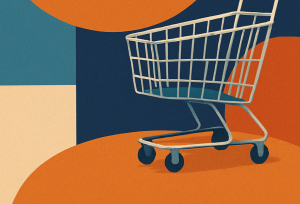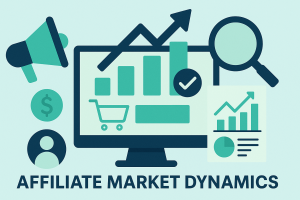
Share
I want to ask you a question with an answer that is both simple and complicated at once. You ready? Here it is.
Why do people buy from Amazon?
The answer feels like it should be obvious, right? Your first thought is something along the lines of lower prices or the convenience of one-click shopping or maybe you think that people just want to help Jeff Bezos build a spaceship big enough to fly him to Pluto (we’ll miss you Jeff…kind of).
But the real answer is that it’s because they have the most stuff. A survey by Digital Commerce 360 shows that the #1 reason people shop on Amazon is that they can find everything there. This answer even beat out free shipping for Prime members.
Amazon thrives because they’ve built the world’s largest online store and consumers love to wander the digital aisles and see all of their options.
And the brilliant part for Amazon is that they don’t even own most of what they sell. Instead, they operate a marketplace where vendors can use Amazon’s platform and reputation to connect with millions of customers, while Amazon collects billions in commissions on their sales.
That success is probably why 46% of e-commerce retailers said that online marketplace growth was a top priority for their brand in 2022. Top retailers such as Macy’s, Kroger and J.Crew are all building out their own online marketplaces where outside retailers can sell products through their branded shopping portal.
And the numbers prove that the marketplaces are an effective way for brands to sell. 40% of sellers surveyed said that online marketplaces accounted for 20% of their digital sales, and an additional 25% said that online shopping portals generated over half of their revenue.
Vendors are also finding that conversion rates are higher on marketplaces than on their own sites, which is likely due to the significant brand trust that marketplaces built by major retailers such as Amazon, Target and Walmart possess. Additionally, these markets are also being used to “audition” products that might prove popular in their physical retail locations.
In the 360 report, Jon Kirsch, the CEO of a sportswear brand Aventura, says that they were able to sell directly to sporting goods chain Scheels after having success on their online marketplace.
“With Scheels, they’re definitely looking at what’s selling in what region with the intent that they would at some point bring that product into their brick-and-mortar stores.”
Placement on a good marketplace has benefits beyond greater sales. You can also increase brand awareness, your SEO rankings and connect with new customers in a cost-effective way.
Makes sense, right? Retailers are able to offer products from more brands that consumers want, while smaller brands can benefit from the larger customer base that a big-name retailer is able to bring them.
Simple, yes, but also complicated because marketplaces work by drop shipping, which requires a seamless flow of information between the customer, the retailer and the brand, which becomes challenging when you’re working with multiple brands, all of whom have their own software programs for managing inventory, shipping and pricing.
To build a successful marketplace, retailers need to find a way to take information from potentially dozens of different sales management programs and find a way to centralize and standardize that data so they can have clear communications between brands and customers about inventory, shipping times and other sales data.
That’s the problem that companies like Logicbroker are trying to solve. Logicbroker, which was founded in 2010, offers many functions but one of the most useful is its API, which is able to take data from the EPI systems that many drop shippers use and import it in a readable form into a retailers order, content management and warehouse systems.
This means that brands don’t have to change their own internal systems to communicate with the retailer and the entire onboarding process becomes much easier.
To date, Logicbroker has built connections between 4,000 different brands, 140 retail channels and enabled over $5 billion in transactions.
So, yes, again, simple but complicated but also quite profitable if done properly.
Year-over-year, e-commerce continues to grow by the hundreds of millions in the United States, but if you want that growth to be reflected in your own sales, you need to meet consumers where they are, and increasingly that’s on online marketplaces fronted by major retail brands.
That means that learning how to successfully integrate your product into them will be a key to driving sales growth for your business in 2022.
It’s just that simple.




